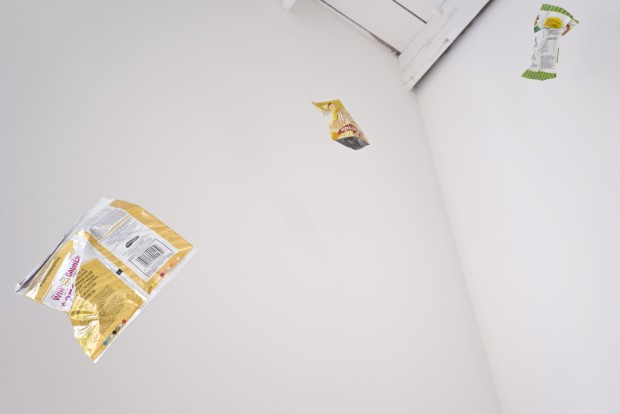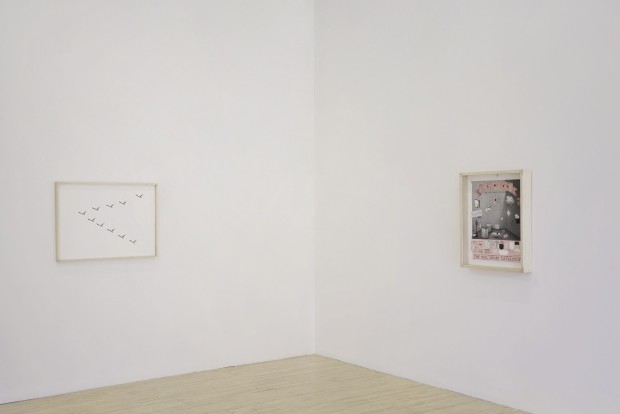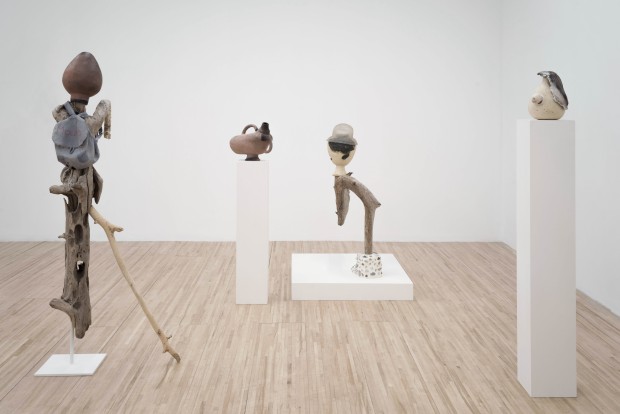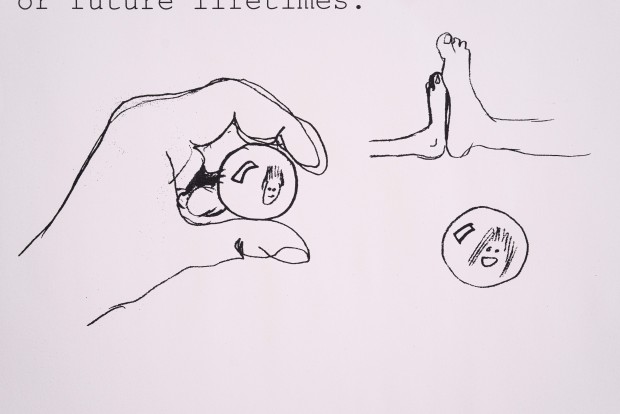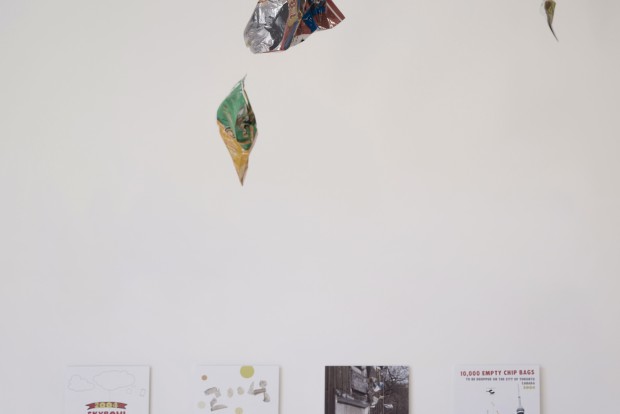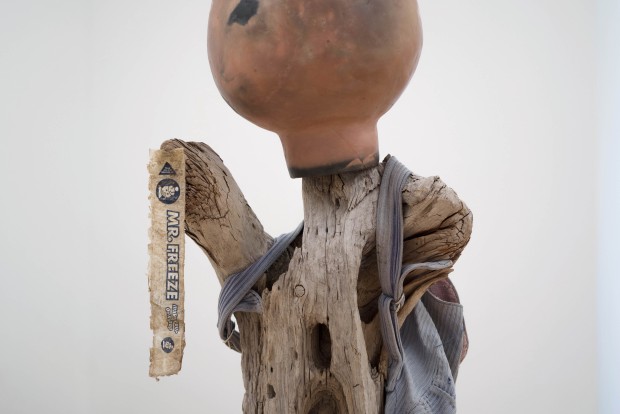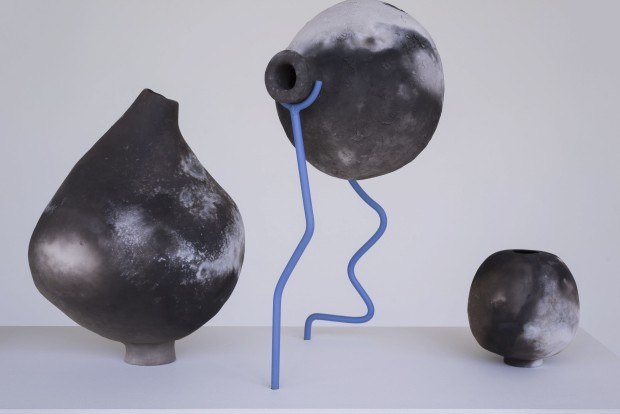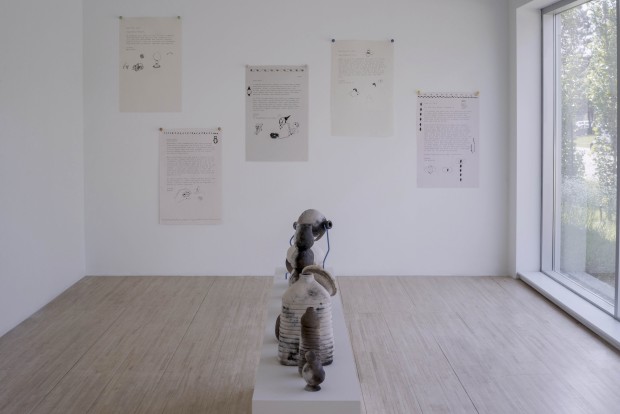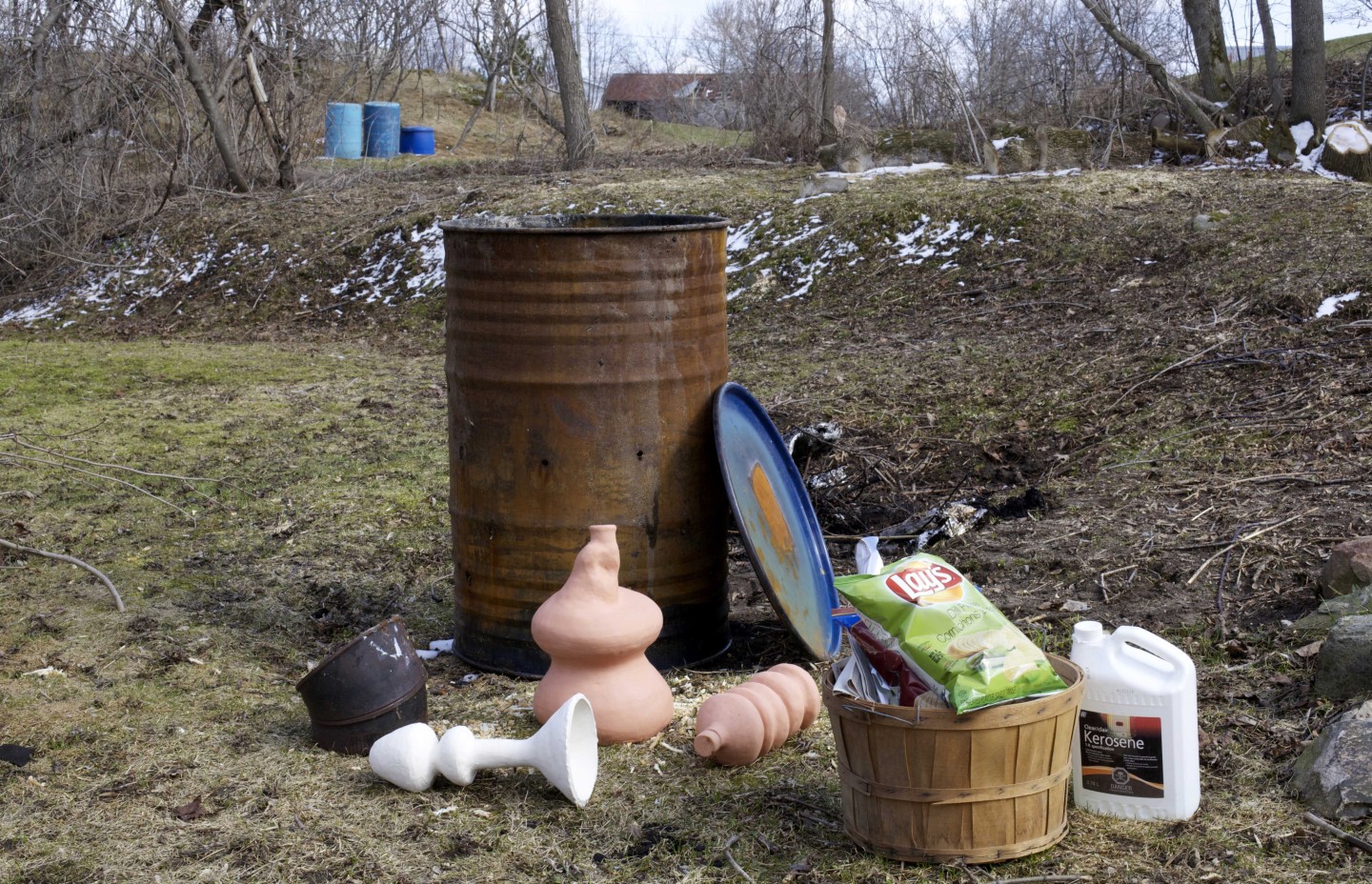
Maura Doyle, Spring Barrel Firing (2022).
Dear Universe / Cher Univers
Maura Doyle
- Exhibition
- Opening reception
Opening party on July 6, on the occasion of the summer programming opening, in the presence of the artists.
Music by DJ Rodrigo Medrano
Free admission
Cash bar
Free parking
Beavers are the only mammals, aside from humans, who are known to manufacture their own environment. With seeming irreverence, they diligently appropriate, block, and undermine existing systems to create new contexts that suit themselves and support others. It is perhaps unsurprising that over the course of the past two decades, conceptual artist Maura Doyle has repeatedly returned to the beaver as a focus in her artistic practice. She too borrows from that which is close at hand, and inverts presumptions about value, selfhood, and how we spend our time, to propose imagined alternatives for inhabiting the world.
From the outset, Doyle resisted the space of the gallery and instead developed artworks that operated outside its context. She focused her efforts on observing and documenting wild animals in their natural habitats near her family home in rural Ontario, undertaking elaborate correspondence – such as her decade-long mail order catalogue project with friend and collaborator Annie Dunning – and proposing hilarious actions like dropping 10,000 empty potato chip bags by helicopter through the retractable roof of Toronto’s SkyDome. In each instance, it is Doyle’s working process, rather than any final object form, which is the real site of the work. While these processes often involved a playful and dogged commitment to an endeavour – one such instance saw the artist ferrying a log gnawed by a beaver through the Panama Canal – they also relied upon “legitimate” instruments of solicitation and research, such as letter-writing campaigns and pseudo-scientific field studies. The constructed logic of these activities, as well as their modes of engagement, invites Doyle’s audience communities into an impish re-examination of context, labour, and value.
In Doyle’s practice, material form has always followed the conceptual inquiry at hand. She began experimenting with clay after becoming a parent because it was work she could hand-build in her kitchen while minding her small son. (It also enacted yet another subtle push-back against presumptions of how and at what scale a critically-engaged art practice is sustained.) As objects nearly as old as humanity itself, and already anthropomorphized – we speak of clay vessels having necks, bellies and feet – pots offered a vehicle for Doyle to explore the idea of selfhood. With their often complex and unknowable interiors, pots could be approached as containers of lived experience, and, as in Doyle’s writing practice, became portals for the artist’s spiritual exploration of the relationship between our inner and outer worlds. But as in her earlier activity-based work, Doyle’s pottery resists seamlessness and polish. Hand-formed and imperfect, the surfaces of her pots are left unglazed (and are thus unmarketable as utilitarian vessels), and instead are blackened and marred from the smoke of her open-flame firing process.
By drawing attention to the diminutive and the easily overlooked, inflating the personal to the celestial, and monumentalizing the low-brow, Doyle questions how we hierarchize and justify what is important to ourselves and others. She pokes at late capitalism’s patriarchal bombasticism and excess (everything must be supersized!), but at the same time proposes in earnest a meditation on the brevity of human existence within the immensity of cosmic time. In so doing, Doyle validates our asking of big questions alongside trivial ones, acknowledging that both are part of what makes us human.
— Kimberly Phillips
Maura Doyle
Maura Doyle lives and works in Ottawa/Algonquin Anishinaabeg Aki and studied at Emily Carr University of Art + Design and the University of Guelph (MFA). Her work has been exhibited across Canada and internationally, including solo exhibitions at Open Studio (Toronto, 2019), Paul Petro Contemporary Art (Toronto, 2005-2019), Carleton University Art Gallery (CUAG, Ottawa, 2017), Toronto Sculpture Garden (2004), and Or Gallery (Vancouver, 2002); group shows at Contemporary Art Gallery Vancouver (2020), Angus-Hughes Gallery (London, 2018), Ottawa Art Gallery (2018), Dalhousie University Art Gallery (Halifax, 2015), Remo (Osaka, 2006), Power Plant (Toronto, 2005), Passagen Art Centre (Linköping, Sweden, 2004), Art Metropole (Toronto, 2004) and White Columns (New York, 2004).
The artist gratefully acknowledges support from Canada Council for the Arts, Ontario Arts Council and City of Ottawa. And the assistance and time of Jojo Cadieux, Rosemary Heather, Danny Hussey, Hannah Jickling, Kimberly Phillips, Bridget Thompson, and at AXENÉO7: M.A. Marleau, Jean-Michel Quiron, AXENÉO7 staff and installation crew.
Kimberly Phillips
Kimberly Phillips is Director of SFU Galleries at Simon Fraser University. Over the past 15 years, in her roles as gallery director, curator, and teacher based on the unceded territories of the xwməθkwəy̓ əm, Skwxwú7mesh and səl̓ílwətaʔɬ/Selilwitulh peoples, she has worked to amplify the voices of under-acknowledged artists and practitioners, ethically vision and build organizational capacity, and create meaningful and unexpected ways for contemporary artists and their publics to find one another. From 2017-2020 she held the position of Curator at the Contemporary Art Gallery (Vancouver), overseeing the gallery’s exhibitions, publications and artist residencies. Previous to this she served as Director/Curator of Access Gallery (2013-2017), a Vancouver artist-run centre committed to emergent and experimental practices. Phillips holds a PhD in art history from the University of British Columbia (2007), where she was an Izaak Walton Killam Doctoral Fellow. Her curatorial practice maintains a particular interest in questions of resistance, as well as the conditions under which artists work.
